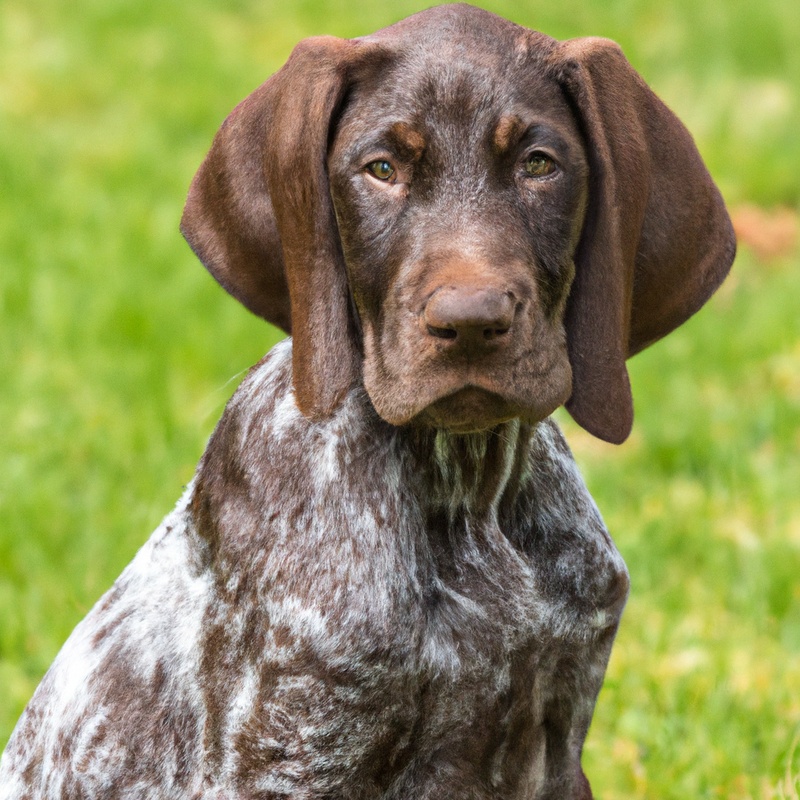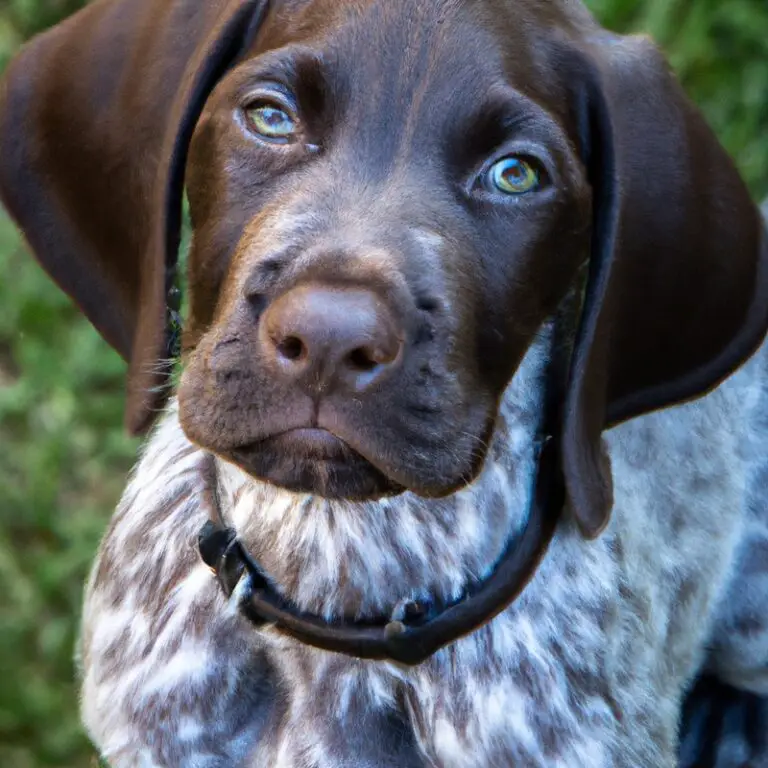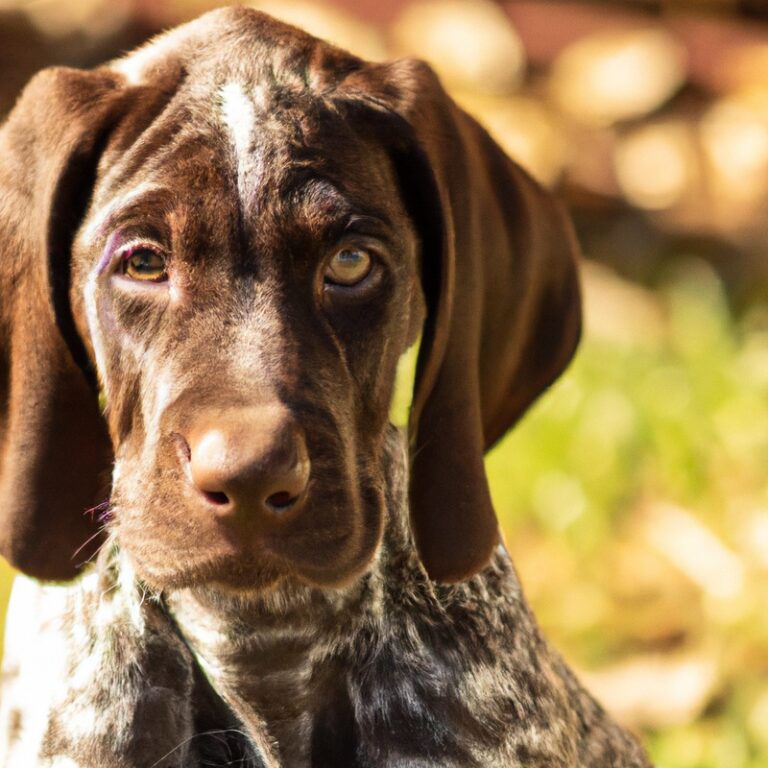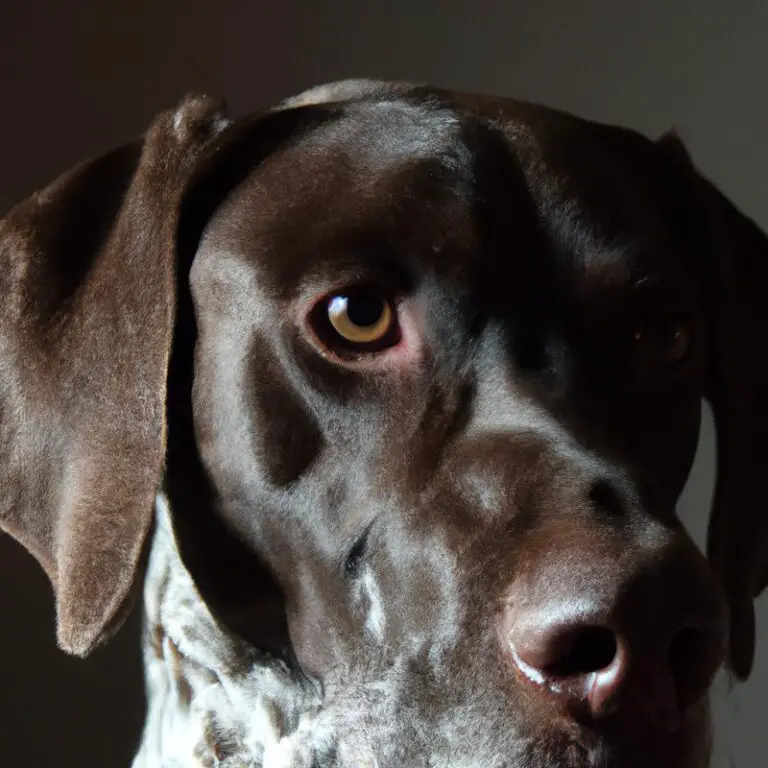What Are The Signs Of a German Shorthaired Pointer Experiencing Joint Pain Or Arthritis?
Key Takeaways:
- Decreased activity and reluctance to participate in physical exercise may indicate joint pain or arthritis in a German Shorthaired Pointer.
- Limping or favoring a particular leg could be a sign of joint discomfort in a German Shorthaired Pointer.
- Difficulty getting up or lying down, as well as hesitancy to climb stairs or jump, may suggest joint pain or arthritis in this breed.
- Behavioral changes such as increased irritability or aggression could be linked to joint discomfort or arthritis in a German Shorthaired Pointer.
Have you ever noticed your German Shorthaired Pointer struggling with joint pain or arthritis? As a dog lover and expert, I understand how heartbreaking it can be to see our furry friends in discomfort.
That’s why it’s crucial to recognize the signs and take action early on.
In this article, we’ll explore the physical and behavioral indicators that may signal joint issues in German Shorthaired Pointers, as well as the environmental factors that can exacerbate their discomfort. I’ll also share valuable tips on managing and treating joint pain, along with preemptive measures you can take to promote your pup’s overall joint health.
So, let’s dive in and ensure our four-legged companions live their best, pain-free lives!
| Signs of Joint Pain or Arthritis in German Shorthaired Pointers |
|---|
| Limping or favoring a leg |
| Stiffness, particularly after exercise or when getting up |
| Reluctance to climb stairs or jump |
| Difficulty in standing or lying down |
| Changes in behavior or temperament (e.g., aggression when touched) |
| Loss of appetite or decreased activity level |
| Swelling or heat around the joints |
| Visible deformities or abnormalities in the joints |
| Licking or biting the affected joints |
| Reluctance to engage in physical activities they previously enjoyed |
Recognizing Joint Pain and Arthritis in German Shorthaired Pointers
Why it’s important to monitor joint health in German Shorthaired Pointers
Monitoring joint health in German Shorthaired Pointers is essential for their overall well-being. Joint pain and arthritis can severely impact their quality of life, causing discomfort and limitations in mobility.
By keeping a close eye on their joint health, you can detect any issues early on and take appropriate measures.
Regular monitoring allows you to provide timely interventions, such as appropriate exercise, joint supplements, and veterinary treatment, thus helping to manage pain, slow down the progression of arthritis, and improve your pup’s comfort and happiness.

Common causes of joint pain and arthritis in German Shorthaired Pointers
Common causes of joint pain and arthritis in German Shorthaired Pointers can be attributed to a few factors. One of the main reasons is genetics.
Just like humans, certain breeds of dogs are more prone to developing joint issues.
In the case of German Shorthaired Pointers, their genetic makeup can make them susceptible to conditions like hip dysplasia and osteoarthritis. Another factor is age.
As German Shorthaired Pointers get older, their joints naturally wear down and become more prone to inflammation and pain.
This is a common occurrence in many breeds, but it can be more pronounced in active and athletic dogs like German Shorthaired Pointers. Injuries and trauma can also lead to joint pain and arthritis in German Shorthaired Pointers.
High-energy activities or accidents can cause damage to the joints, leading to long-term issues.
Lastly, obesity can exacerbate joint problems. German Shorthaired Pointers that are overweight put extra stress on their joints, increasing the likelihood of developing joint pain and arthritis.
If you notice any signs of joint pain or arthritis in your German Shorthaired Pointer, it’s important to consult with a veterinarian.
They can provide a proper diagnosis and recommend the best course of treatment to alleviate your dog’s discomfort.
Physical Signs of Joint Pain and Arthritis in German Shorthaired Pointers
Changes in gait and movement patterns
Changes in gait and movement patterns are important signs to watch out for in German Shorthaired Pointers experiencing joint pain or arthritis. One noticeable change is a limp or favoring of a particular leg.
You may also observe stiffness or difficulty in getting up or lying down.
Another sign is a change in the way your dog walks, such as a slower pace or an altered stride. Pay close attention to any signs of discomfort or awkward movement.
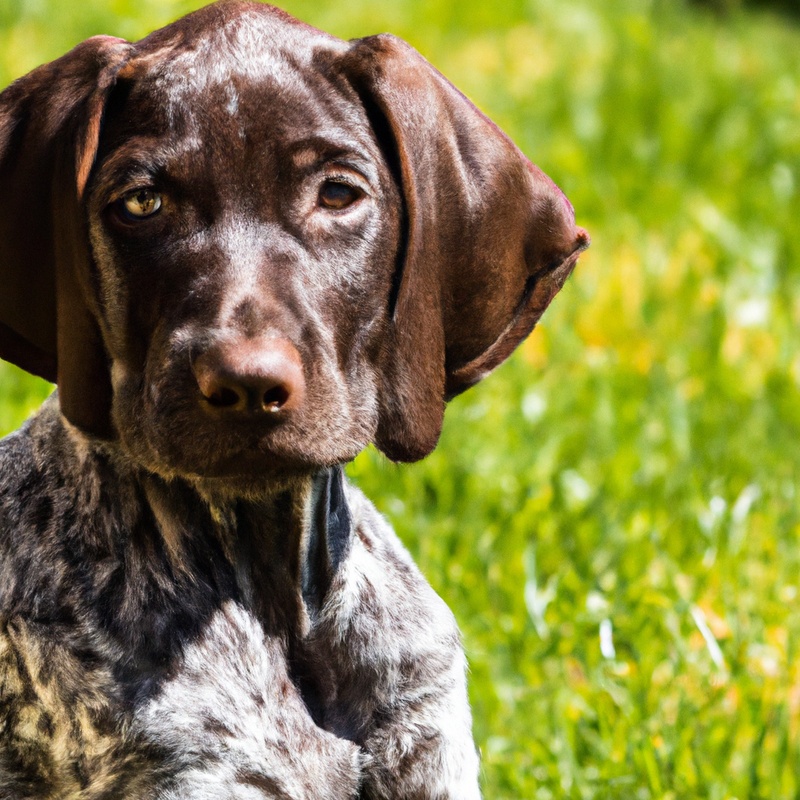
Noticeable stiffness and difficulty getting up or lying down
Noticeable stiffness and difficulty getting up or lying down are common signs that a German Shorthaired Pointer may be experiencing joint pain or arthritis. It’s important to pay attention to any changes in your dog’s movement patterns and behavior.
If you notice that your dog is moving slower than usual, struggling to stand up or lie down, or showing signs of discomfort when performing these actions, it could be an indication of joint pain.
These symptoms should not be ignored and a visit to the vet is recommended to determine the cause and appropriate treatment for your furry friend.

Reluctance to jump, run, or engage in physical activity
One sign that your German Shorthaired Pointer may be experiencing joint pain or arthritis is a reluctance to jump, run, or engage in physical activity. You may notice that your dog is less active than usual, avoiding activities that they used to enjoy.
They may be hesitant to jump onto furniture or play fetch like they used to.
This could be a hint that their joints are causing them discomfort and they are trying to avoid aggravating the pain. Keep an eye out for this behavior and consult with your veterinarian if you have any concerns.
Limping or favoring a specific leg
Limping or favoring a specific leg is one of the key signs that your German Shorthaired Pointer may be experiencing joint pain or arthritis. This is when you notice your dog walking with a noticeable limp or not putting weight on a particular leg.
When your dog limps, it’s a way for them to compensate for the discomfort or pain they are feeling in their joints.
They may also favor a specific leg by not using it as much or holding it up slightly off the ground. It’s important to pay attention to these signs and consult with your veterinarian.
They can help determine the underlying cause of the limping or favoring and provide appropriate treatment options.
Swelling or inflammation around the joints
Swelling or inflammation around the joints is a common sign of joint pain or arthritis in German Shorthaired Pointers. When your furry friend experiences this, you may notice their joints appearing red, swollen, and tender to the touch.
This can cause discomfort and limit their mobility.
It’s important to monitor any changes in your dog’s joints and seek veterinary care if you suspect joint pain or arthritis.
Behavioral Signs of Joint Pain and Arthritis in German Shorthaired Pointers
Increased irritability or aggression
Increased irritability or aggression can be a sign that your German Shorthaired Pointer is experiencing joint pain or arthritis. Dogs, like humans, can become irritable or aggressive when they are in pain or discomfort.
If you notice your dog acting differently, snapping, growling, or being more reactive than usual, it might be worth considering joint pain as a possible cause.
Excessive licking or chewing at joints
Excessive licking or chewing at joints is a common behavioral sign that your German Shorthaired Pointer may be experiencing joint pain or arthritis. It’s important to pay attention if you notice your dog excessively licking or chewing at a specific joint or area of their body.
This behavior could be their way of trying to alleviate discomfort or inflammation.
Keep in mind that there can be other causes for this behavior, so it’s best to consult with your veterinarian to determine the underlying issue and provide appropriate treatment for your furry friend.
Reluctance to be touched or groomed
Reluctance to be touched or groomed is a clear sign that your German Shorthaired Pointer may be experiencing joint pain or arthritis. If your normally affectionate and cooperative pup suddenly becomes resistant to being touched or groomed, it’s important to pay attention.
This reluctance can be due to the discomfort and pain they are feeling in their joints.
Keep an eye out for any changes in behavior, such as flinching, growling, or snapping when touched. It’s crucial to consult with your veterinarian to determine the underlying cause and develop a plan for relief and management.
Changes in appetite or weight loss
Changes in appetite or weight loss can be significant indicators that a German Shorthaired Pointer is experiencing joint pain or arthritis. If you notice that your furry friend is suddenly eating less or has lost weight without any apparent reason, it may be a sign that they are in pain.
Dogs with joint discomfort often lose their appetite or have difficulty eating due to the discomfort they feel while moving or bending.
Additionally, the pain and inflammation associated with arthritis can lead to weight loss as your dog becomes less active and moves less, resulting in a decrease in muscle mass. Keeping an eye on changes in your German Shorthaired Pointer’s appetite and weight can help you identify potential joint problems early on.
Reluctance to climb stairs or use elevated surfaces
Reluctance to climb stairs or use elevated surfaces can be a clear indicator that your German Shorthaired Pointer is experiencing joint pain or arthritis. If you notice your dog avoiding stairs or having difficulty jumping onto furniture or other elevated areas, it’s essential to pay attention.
This behavior suggests that they may be experiencing discomfort or pain in their joints.
It’s crucial to consult with your veterinarian to assess your dog’s condition and discuss appropriate treatment options.
Environmental Factors that Exacerbate Joint Pain in German Shorthaired Pointers
Impact of cold weather on joint discomfort
When it comes to joint discomfort, cold weather can have a significant impact. Cold temperatures can cause the muscles and joints to stiffen up, making movement more difficult and painful.
Additionally, changes in barometric pressure during cold weather can also affect joint pain, as it puts extra pressure on the joints.
This can be particularly challenging for dogs with joint conditions like arthritis. So, if you notice your German Shorthaired Pointer experiencing increased joint pain or stiffness during colder weather, it may be due to the impact of the cold temperatures.
Influence of high-impact activities on joint health
High-impact activities can have a significant impact on the health of your joints. These activities, such as running, jumping, or intense exercise, can put a lot of stress on your joints, especially if done frequently or without proper form and technique.
The repeated impact and pressure can lead to wear and tear, cartilage damage, and even joint pain or arthritis over time.
So, it’s important to be mindful of the intensity, duration, and frequency of these activities to protect your joint health.
Importance of providing comfortable bedding and rest areas
When it comes to caring for your German Shorthaired Pointer (GSP) who may be experiencing joint pain or arthritis, providing comfortable bedding and rest areas is crucial. First and foremost, a cozy and supportive bed can alleviate pressure on their joints, providing them with much-needed relief.
Imagine sinking into a soft, orthopedic bed after a long day – that’s what your GSP needs too! By ensuring they have a comfortable resting spot, you’re helping them recover and stay comfortable.
You can also consider providing additional cushions or blankets to create a snug and warm environment that promotes relaxation and healing.
Treatment and Management of Joint Pain and Arthritis in German Shorthaired Pointers
Importance of early detection and veterinary consultation
First and foremost, it is crucial to understand the importance of early detection and veterinary consultation when it comes to joint pain and arthritis in German Shorthaired Pointers. Detecting these conditions early allows for timely intervention and management, which can greatly improve the quality of life for your furry friend.
By seeking veterinary consultation, you can get a proper diagnosis and personalized treatment plan tailored to your dog’s specific needs.
Medication options to alleviate pain and reduce inflammation
When it comes to medication options for alleviating pain and reducing inflammation in German Shorthaired Pointers with joint pain or arthritis, there are several options available. First and foremost, nonsteroidal anti-inflammatory drugs (NSAIDs) are commonly prescribed by veterinarians.
These drugs work by reducing inflammation in the joints, providing relief from pain.
Some commonly used NSAIDs for dogs include carprofen, meloxicam, and deracoxib. In addition to NSAIDs, there are also other medication options that can help manage joint pain in German Shorthaired Pointers.
These include joint supplements containing ingredients like glucosamine and chondroitin, which can promote joint health and reduce inflammation over time.
It is important to always consult with a veterinarian before starting any medication for your German Shorthaired Pointer. They will be able to provide the most appropriate and effective treatment plan for your dog’s specific needs.
Incorporating joint supplements and specialized diets
Incorporating joint supplements and specialized diets can be beneficial for German Shorthaired Pointers experiencing joint pain or arthritis. These supplements can help support joint health and reduce inflammation.
Look for supplements that contain glucosamine, chondroitin, and omega-3 fatty acids, as these ingredients have been shown to promote joint health.
Additionally, specialized diets formulated for joint support can provide the necessary nutrients and antioxidants to maintain healthy joints. It’s important to consult with your veterinarian before starting any supplements or diets to ensure they are appropriate for your dog’s specific needs.
Physical therapy and exercise routines for joint support
Physical therapy and exercise routines play a vital role in supporting joint health. By incorporating these practices into the daily routine of your German Shorthaired Pointer, you can help manage joint pain and arthritis symptoms.
Regular exercise helps strengthen the muscles around the joints, providing support and stability.
Low-impact activities such as swimming and controlled, leash-based walks are great options. Physical therapy exercises, prescribed by a professional, can also improve flexibility, range of motion, and overall joint function.
Alternative therapies and complementary treatments
Alternative therapies and complementary treatments can be valuable additions to traditional veterinary care for German Shorthaired Pointers experiencing joint pain or arthritis. These approaches can help alleviate discomfort and improve overall quality of life for your furry friend.
Some alternative therapies that may benefit your German Shorthaired Pointer include acupuncture, massage therapy, and chiropractic care.
Acupuncture involves the insertion of tiny needles into specific points on the body to stimulate healing and pain relief. Massage therapy can help increase circulation, reduce muscle tension, and promote relaxation.
Chiropractic care focuses on the alignment of the spine and joints to improve mobility and decrease pain.
Complementary treatments, such as herbal supplements and dietary modifications, can also be beneficial. Certain herbs, such as turmeric or devil’s claw, have anti-inflammatory properties that may help reduce joint inflammation and pain.
Additionally, adjusting your dog’s diet to include joint-supporting ingredients like omega-3 fatty acids and glucosamine can provide added relief.
It’s important to note that while alternative therapies and complementary treatments can be useful, they should always be used in conjunction with guidance from a qualified veterinarian. As always, discussing these options with your vet and working together to create a comprehensive treatment plan tailored to your German Shorthaired Pointer’s individual needs is the best course of action.
Creating an accommodating home environment
Creating an accommodating home environment is essential for German Shorthaired Pointers experiencing joint pain or arthritis. First and foremost, provide them with a comfortable and supportive bed that is easily accessible.
Consider using orthopedic or memory foam beds designed specifically for dogs with joint issues.
Another crucial aspect is to ensure that your home is free from hazards that could worsen their condition. Remove any obstacles or slippery surfaces that could cause them to slip or strain their joints.
Rugs or non-slip mats can be used to provide better traction on slippery floors.
Additionally, consider providing ramps or steps to help your German Shorthaired Pointer navigate elevated surfaces such as stairs or furniture. This can reduce the strain on their joints and make it easier for them to move around.
Regular exercise is important for managing joint pain and arthritis, but it’s essential to choose low-impact activities that won’t exacerbate their condition.
Walking on soft surfaces like grass or sand can be gentler on their joints compared to concrete or pavement. Lastly, incorporating a healthy diet that includes joint-supporting supplements can also contribute to their overall well-being.
Talk to your veterinarian about specialized foods or supplements that may benefit your dog’s joint health.
By implementing these measures, you can create a comfortable and accommodating home environment that supports your German Shorthaired Pointer’s joint health and improves their quality of life.
Preemptive Measures to Promote Joint Health in German Shorthaired Pointers
Regular exercise and weight management
Regular exercise and weight management are key factors in promoting joint health in German Shorthaired Pointers. Getting your furry friend moving regularly helps to strengthen their muscles, which in turn helps support their joints.
The right amount and type of exercise will depend on your dog’s age, overall health, and any pre-existing joint conditions they may have.
For weight management, it’s important to keep your German Shorthaired Pointer at a healthy weight. Excess weight puts unnecessary strain on their joints, leading to increased pain and discomfort.
Consult with your veterinarian to determine the ideal weight for your dog and establish a suitable diet and exercise plan to achieve and maintain it.
Providing a balanced diet rich in joint-supporting nutrients
When it comes to promoting joint health in German Shorthaired Pointers, one essential aspect is providing them with a balanced diet rich in joint-supporting nutrients. By incorporating the right nutrients into their meals, you can help support their joint health and reduce the risk of joint pain or arthritis.
First and foremost, make sure to include sufficient amounts of omega-3 fatty acids in their diet.
These healthy fats can help reduce inflammation in the joints, relieving any discomfort or pain. You can find omega-3 fatty acids in fatty fish like salmon or in fish oil supplements specifically formulated for dogs.
Another important nutrient to include is glucosamine.
Glucosamine is known for its role in maintaining healthy joint cartilage and reducing joint inflammation. You can find glucosamine supplements designed for dogs or look for dog food labels that include glucosamine as an ingredient.
Additionally, ensure that your German Shorthaired Pointer receives an adequate amount of vitamin C and E.
These vitamins act as powerful antioxidants, protecting the joints from damage due to free radicals. Good sources of vitamin C and E include fruits and vegetables like blueberries, broccoli, and spinach.
Lastly, ensuring that your dog maintains a healthy weight is crucial for joint health.
Excess weight can put strain on the joints, leading to pain and inflammation. Provide a balanced diet with controlled portions to prevent obesity and maintain a healthy body weight for your German Shorthaired Pointer.
By implementing a balanced diet rich in joint-supporting nutrients, you can support your German Shorthaired Pointer’s overall joint health and help prevent joint pain or arthritis.
Ensuring proper warm-up and cool-down during physical activities
When it comes to keeping your German Shorthaired Pointer’s joints healthy and preventing injuries, one crucial aspect is ensuring they have a proper warm-up and cool-down during physical activities. First and foremost, before starting any exercise or physical activity, it’s important to give your dog a warm-up.
This can include a short walk or some gentle stretching to loosen up their muscles and get their blood flowing.
It helps prepare their joints and reduces the risk of strains or sprains. After the activity, make sure to incorporate a cool-down routine.
This can involve a slow walk or some gentle stretching exercises to gradually bring down their heart rate and help their muscles and joints recover.
A cool-down can reduce soreness and minimize the risk of joint stiffness. By implementing a proper warm-up and cool-down routine, you can help protect your German Shorthaired Pointer’s joints and ensure they stay active and healthy for years to come.
Regular veterinary check-ups and assessments of joint health
Regular veterinary check-ups and assessments of joint health are essential for maintaining the overall well-being of your German Shorthaired Pointer. By scheduling these routine visits, you can ensure that any potential joint issues or signs of arthritis are detected early on.
Your veterinarian will perform a thorough examination of your dog’s joints, checking for any abnormalities or discomfort.
They may also recommend additional tests such as X-rays or blood work to get a comprehensive picture of your dog’s joint health.
Proper breeding practices to reduce genetic predisposition to joint issues
Proper breeding practices play a crucial role in reducing the genetic predisposition to joint issues in German Shorthaired Pointers. One important aspect is to select breeding pairs that have good joint health and have been tested for any potential genetic abnormalities.
This helps minimize the risk of passing on joint issues to their offspring.
Additionally, breeders should avoid breeding dogs that have a history of joint problems or are closely related to individuals with such issues. Regular health screenings for joint conditions are also recommended to ensure the overall well-being of the breed.
By following these practices, breeders can contribute to the long-term joint health of German Shorthaired Pointers.
Final Verdict
Recognizing the signs of joint pain and arthritis in German Shorthaired Pointers is crucial for their overall well-being. By monitoring their joint health, identifying physical and behavioral signs, and understanding the environmental factors that exacerbate their discomfort, we can take proactive steps to alleviate their pain.
With early detection, veterinary consultation, appropriate medication, supplements, and therapies, we can effectively manage joint pain in these beloved dogs.
By implementing preemptive measures such as regular exercise, proper diet, and breeding practices, we can promote optimal joint health in German Shorthaired Pointers. Trust in the expertise and knowledge shared here to ensure a happy and pain-free life for your furry companion.

